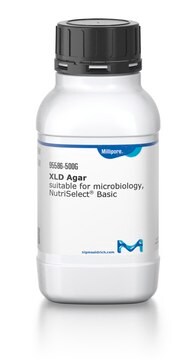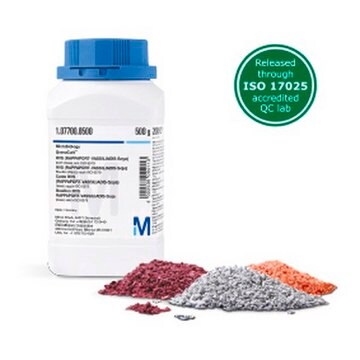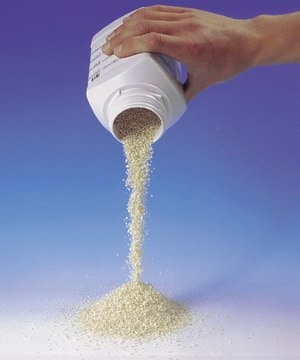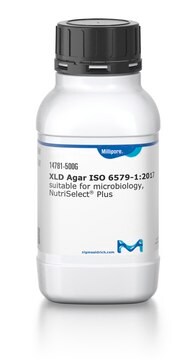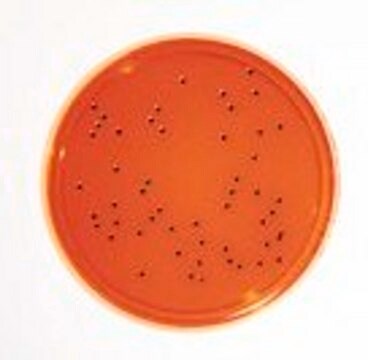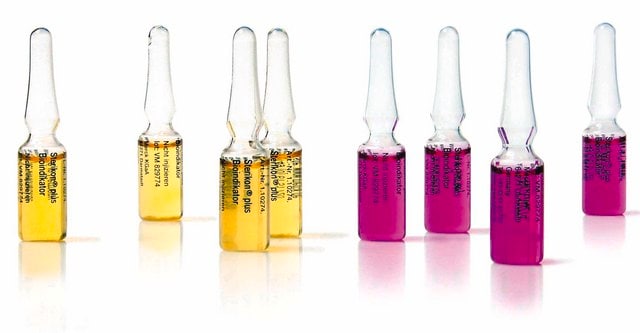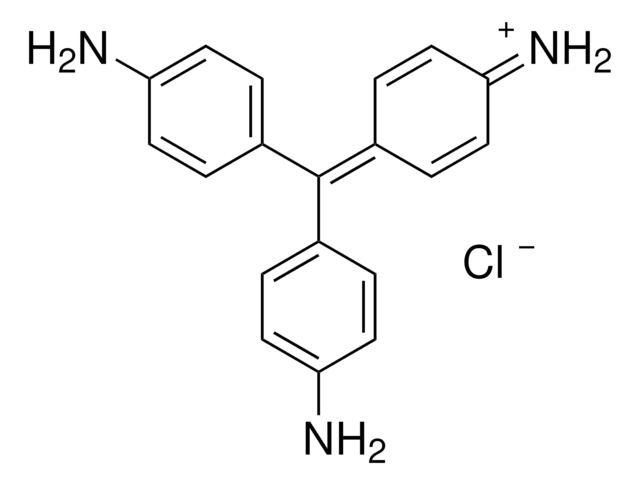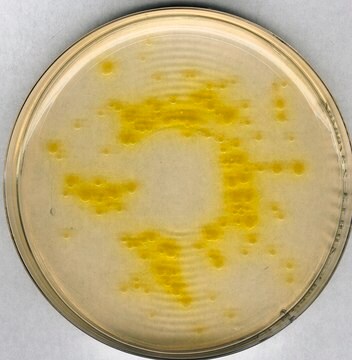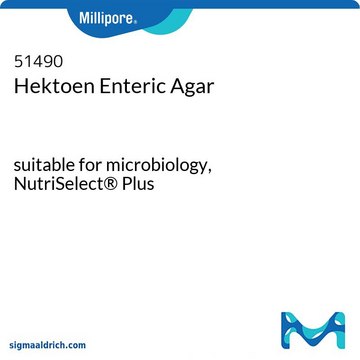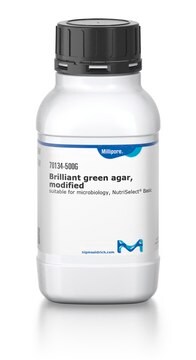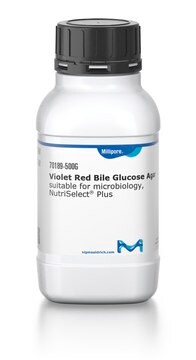1.05287
GranuCult® Xylose Lysine Deoxycholate agar
acc. ISO 6579, ISO 19250, and APHA, suitable for microbiology
Synonym(s):
XLD agar
About This Item
Recommended Products
agency
APHA
ISO 19250
ISO 6579
Quality Level
sterility
non-sterile
form
granular
manufacturer/tradename
GranuCult® prime
technique(s)
microbiological culture: suitable
pH
7.2-7.6 (25 °C, 55 g/L in H2O)
solubility
55 g/L
application(s)
food and beverages
microbiology
storage temp.
15-25°C
suitability
Salmonella spp.
General description
Application
Analysis Note
Appearance (colour): red
pH-value (25 °C): 7.2 - 7.6
Growth promotion test in accordance with the current version of DIN EN ISO 11133.
Inoculum on reference medium (Salmonella typhimurium ATCC 14028 (WDCM 00031)):
Inoculum on reference medium (Salmonella enteritidis ATCC 13076 (WDCM 00030)):
Colony count (Salmonella typhimurium ATCC 14028 (WDCM 00031)):
Colony count (Salmonella enteritidis ATCC 13076 (WDCM 00030)):
Recovery on test medium (Salmonella typhimurium ATCC 14028 (WDCM 00031)): ≥ 50 %
Recovery on test medium (Salmonella enteritidis ATCC 13076 (WDCM 00030)): ≥ 50 %
Growth (Escherichia coli ATCC 25922 (WDCM 00013)): Growth or partial inhibition
Growth (Escherichia coli ATCC 8739 (WDCM 00012)): Growth or partial inhibition
Growth (Enterococcus faecalis ATCC 29212 (WDCM 00087)): total inhibition
Growth (Enterococcus faecalis ATCC 19433 (WDCM 00009)): total inhibition
Colonies (Salmonella typhimurium ATCC 14028 (WDCM 00031)): Colonies with black centre
Colonies (Salmonella enteritidis ATCC 13076 (WDCM 00030)): Colonies with black centre
Colonies (Escherichia coli ATCC 25922 (WDCM 00013)): Yellow colonies
Colonies (Escherichia coli ATCC 8739 (WDCM 00012)): Yellow colonies
Incubation: 24 ± 3 hours at 37 ± 1 °C
A recovery rate of 50 % is equivalent to a productivity value of 0.5.
The indicated colony counts result from the sum of a triple determination.
Reference media: Tryptic Soy Agar
Footnote
The designations basic, plus, or prime are added to indicate the quality control level, from basic quality control to standard QC plus to prime for full regulatory compliance.
Legal Information
Storage Class
11 - Combustible Solids
wgk_germany
WGK 3
Certificates of Analysis (COA)
Search for Certificates of Analysis (COA) by entering the products Lot/Batch Number. Lot and Batch Numbers can be found on a product’s label following the words ‘Lot’ or ‘Batch’.
Already Own This Product?
Find documentation for the products that you have recently purchased in the Document Library.
Customers Also Viewed
Articles
Salmonella pass through the entire food chain from animal feed, primary production, and into households or food-service establishments.
Shigella spp. are predominantly connected to humans and are rarely isolated from other animals, with the exception of primates.
Technical article on Cultivation of Shigella
Protocols
Specifies a horizontal method for the detection of Salmonella spp. in the food production chain.
Our team of scientists has experience in all areas of research including Life Science, Material Science, Chemical Synthesis, Chromatography, Analytical and many others.
Contact Technical Service